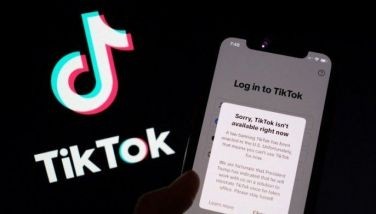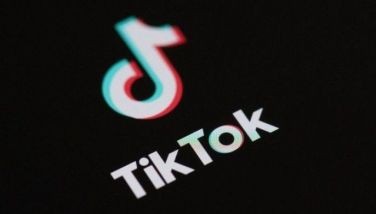The future of TV
March 20, 2006 | 12:00am
Television has long been viewed by media scholars as a passive medium, a laid-back receiver of messages and information.
But proponents of the so-called "active audience" theory have long suggested that TV viewing is not at all a passive activity but an interpretive act in the sense that the programs people watch take on meaning individually and socially.
"Media are part of our social lives and we engage with media in social settings. Sometimes we partake of media in groups, we go to the movies on a date, watch television with our family, or go to a concert with friends. Other times our media use is initially an individual activity but later becomes part of our broader social relationships," wrote W. Hoynes and D. Crocteau in their book Media/Society.
Published in 2000, the scholarly work is an interesting prelude to the coming of Internet Protocol Television (IPTV), which takes the power of media institutions to dictate what people see on their TV sets and empowers the audience to define what they want to watch on screen and how they want to watch it.
Simply put, IPTV is a television service delivered over an IP network. To say the least, it combines traditional broadcasting with telecommunications. In this case, voice and video are not transmitted via the airwaves but over a high-speed broadband connection. And it’s not only voice and video that are delivered but data as well in what they now call "triple play" technology.
While IPTV is now running in the United States, Europe and other advanced Asian countries, the infrastructure rollout all over the world is robust. Research firm IDC sees total IPTV subscribers in the Asia-Pacific (excluding Japan) to grow from nearly half a million in 2004 to more than 20 million by 2009.
Taking into consideration falling bandwidth prices and the steady march of digital technology across platforms, IPTV is fast becoming the future of television.
For the typical couch potato, the features are way too enticing. For a start, with IPTV you get only the channels you want and you can interact with the programs directly.
When watching a basketball game, for example, you can customize your screen and choose the camera angle with which you want to watch the action. You can also download statistics of your favorite player during a live game.
For busybodies who can’t sit in front of a TV set on prime time, one can record a live program and watch it later. So you don’t miss the boat when everybody was gushing over Manny Pacquiao in his legendary fight with Eric Morales or the Oscar Awards the whole world was talking about.
Time-shifting can be a joy. If you are watching a film on a movie channel, you have the option to "freeze" that epic moment when the lovers are about to kiss, when the decisive battle is fought or when the villain is vanquished. You can also rewind or fast-forward to your favorite scenes.
And because the channels and the programming are customized, a group of friends or family members can watch the same program even if they are not in the same room and discuss online what’s going on onscreen.
In this TV of the future, parents will really get to exercise control as they cannot only lock the TV set for programs not suitable for youngsters, but send a text message directly to the TV screen to remind the young ones watching at home that it’s time to turn off the TV set and head for bed, but, of course, not before the teenager in the house gets to vote also via SMS on TV who deserves to be booted out of Big Brother’s house.
But with the Philippines’ broadband penetration pegged at a dismal two percent as compared to Hong Kong’s 73 percent and South Korea’s 67 percent, it may take a while for this new TV technology to be launched here.
Alcatel Philippines Inc., an end-to-end solutions provider which is advocating the technology to be adopted here, is optimistic, though, that if local service providers are willing to bet on this technology and start upgrading their infrastructure to triple play-enabled network, it could become a possibility by the end of 2007.
In a press conference, Herve Pourcines, Alcatel Philippines president and country manager, said people everywhere are looking at the potential of IPTV, but as in any country now toying with the idea of this TV of the future, there’s a lot of hard work to do.
The service providers such as telecoms and cable companies, according to Pourcines, not only have to upgrade their networks but need to forge alliances with media companies such as broadcast media institutions for media content and applications.
"To be able to deliver the services is one thing, to be able to offer 99.9 excellent service quality is another thing," he said.
Geof Heydon, director for innovation and market development of Alcatel Asia-Pacific, said it’s most likely that the fixed-line operators rather than the broadcast networks would take up IPTV since they already have broadband networks and are offering broadband connections.
In Europe, Heydon said all operators are starting to upgrade their networks not only to deliver IPTV but other rich data services and they are in various stages of development.
Not all features of IPTV, though, can be launched in the market all at once.
"It depends a lot on the local market, the uptake of initial service offerings and the pricing package," Heydon said.
Broadband customers are generally willing to pay for broadband plus premium TV services, he said.
In Italy, he said the package usually includes a subscription to a broadband connection plus 50 free channels. Additional channels or services are paid for in incremental amounts.
In the case of AT&T in the US, IPTV service is priced almost similarly with a cable TV subscription with 250 channels.
Heydon said pricing is really dependent on the size and uniqueness of the market, plus the competitive landscape.
While potential IPTV service providers are looking at only around 140,000 DSL lines installed on some four million PCs here in the country for now, the broadband market is actually growing.
With the continuous decline of operator revenues from voice calls because of the growing appeal of Voice over Internet Protocol (VoIP) like Skype’s, operators need to look for other sources of revenue, especially with video and data.
A triple play-enabled network, according to Pourcines, will be able to offer differentiated services such as video on demand (VoD), online games, broadband Internet access and other value-added services which can drive up average revenue per user (ARPU).
Pourcines boldly predicts that there will come a time when broadband, like electricity, water or gas, will become a basic necessity.
"People really want to communicate," he said. "TV today is one way, pre-programmed and mass marketed. The TV of the future is interactive. You can choose or create your own channels. It can receive a phone call or SMS. It’s really about you."
Right now, Alcatel is collaborating with Microsoft to make IPTV more available on a global scale, jointly marketing the integrated IPTV delivery solution using the Alcatel network and Microsoft’s IPTV edition software platform.
This partnership builds on Alcatel’s strength in broadband, IP networking and multimedia end-to-end solutions, and Microsoft’s leadership in TV software solutions.
Alcatel’s MyOwnTV application, for example, allows end-users to create their own TV channel for sharing photos, videos and other personal content with other people.
AmigoTV, on the other hand, allows users to invite friends to watch a TV program at an agreed time in a "virtual living room," where the group can also hold video conferencing and send and receive SMS.
When this becomes a regular feature of TV sets worldwide, then it can be said that audiences are not only "active interpreters" of meanings of TV programs and messages as Hoynes and Crocteau have theorized, but as active contributors in reinventing the medium that is fast morphing from an "idiot box" into an "all-purpose box."
But proponents of the so-called "active audience" theory have long suggested that TV viewing is not at all a passive activity but an interpretive act in the sense that the programs people watch take on meaning individually and socially.
"Media are part of our social lives and we engage with media in social settings. Sometimes we partake of media in groups, we go to the movies on a date, watch television with our family, or go to a concert with friends. Other times our media use is initially an individual activity but later becomes part of our broader social relationships," wrote W. Hoynes and D. Crocteau in their book Media/Society.
Published in 2000, the scholarly work is an interesting prelude to the coming of Internet Protocol Television (IPTV), which takes the power of media institutions to dictate what people see on their TV sets and empowers the audience to define what they want to watch on screen and how they want to watch it.
Simply put, IPTV is a television service delivered over an IP network. To say the least, it combines traditional broadcasting with telecommunications. In this case, voice and video are not transmitted via the airwaves but over a high-speed broadband connection. And it’s not only voice and video that are delivered but data as well in what they now call "triple play" technology.
While IPTV is now running in the United States, Europe and other advanced Asian countries, the infrastructure rollout all over the world is robust. Research firm IDC sees total IPTV subscribers in the Asia-Pacific (excluding Japan) to grow from nearly half a million in 2004 to more than 20 million by 2009.
Taking into consideration falling bandwidth prices and the steady march of digital technology across platforms, IPTV is fast becoming the future of television.
For the typical couch potato, the features are way too enticing. For a start, with IPTV you get only the channels you want and you can interact with the programs directly.
When watching a basketball game, for example, you can customize your screen and choose the camera angle with which you want to watch the action. You can also download statistics of your favorite player during a live game.
For busybodies who can’t sit in front of a TV set on prime time, one can record a live program and watch it later. So you don’t miss the boat when everybody was gushing over Manny Pacquiao in his legendary fight with Eric Morales or the Oscar Awards the whole world was talking about.
Time-shifting can be a joy. If you are watching a film on a movie channel, you have the option to "freeze" that epic moment when the lovers are about to kiss, when the decisive battle is fought or when the villain is vanquished. You can also rewind or fast-forward to your favorite scenes.
In this TV of the future, parents will really get to exercise control as they cannot only lock the TV set for programs not suitable for youngsters, but send a text message directly to the TV screen to remind the young ones watching at home that it’s time to turn off the TV set and head for bed, but, of course, not before the teenager in the house gets to vote also via SMS on TV who deserves to be booted out of Big Brother’s house.
But with the Philippines’ broadband penetration pegged at a dismal two percent as compared to Hong Kong’s 73 percent and South Korea’s 67 percent, it may take a while for this new TV technology to be launched here.
Alcatel Philippines Inc., an end-to-end solutions provider which is advocating the technology to be adopted here, is optimistic, though, that if local service providers are willing to bet on this technology and start upgrading their infrastructure to triple play-enabled network, it could become a possibility by the end of 2007.
In a press conference, Herve Pourcines, Alcatel Philippines president and country manager, said people everywhere are looking at the potential of IPTV, but as in any country now toying with the idea of this TV of the future, there’s a lot of hard work to do.
The service providers such as telecoms and cable companies, according to Pourcines, not only have to upgrade their networks but need to forge alliances with media companies such as broadcast media institutions for media content and applications.
"To be able to deliver the services is one thing, to be able to offer 99.9 excellent service quality is another thing," he said.
Geof Heydon, director for innovation and market development of Alcatel Asia-Pacific, said it’s most likely that the fixed-line operators rather than the broadcast networks would take up IPTV since they already have broadband networks and are offering broadband connections.
In Europe, Heydon said all operators are starting to upgrade their networks not only to deliver IPTV but other rich data services and they are in various stages of development.
Not all features of IPTV, though, can be launched in the market all at once.
"It depends a lot on the local market, the uptake of initial service offerings and the pricing package," Heydon said.
Broadband customers are generally willing to pay for broadband plus premium TV services, he said.
In Italy, he said the package usually includes a subscription to a broadband connection plus 50 free channels. Additional channels or services are paid for in incremental amounts.
In the case of AT&T in the US, IPTV service is priced almost similarly with a cable TV subscription with 250 channels.
Heydon said pricing is really dependent on the size and uniqueness of the market, plus the competitive landscape.
With the continuous decline of operator revenues from voice calls because of the growing appeal of Voice over Internet Protocol (VoIP) like Skype’s, operators need to look for other sources of revenue, especially with video and data.
A triple play-enabled network, according to Pourcines, will be able to offer differentiated services such as video on demand (VoD), online games, broadband Internet access and other value-added services which can drive up average revenue per user (ARPU).
Pourcines boldly predicts that there will come a time when broadband, like electricity, water or gas, will become a basic necessity.
"People really want to communicate," he said. "TV today is one way, pre-programmed and mass marketed. The TV of the future is interactive. You can choose or create your own channels. It can receive a phone call or SMS. It’s really about you."
Right now, Alcatel is collaborating with Microsoft to make IPTV more available on a global scale, jointly marketing the integrated IPTV delivery solution using the Alcatel network and Microsoft’s IPTV edition software platform.
This partnership builds on Alcatel’s strength in broadband, IP networking and multimedia end-to-end solutions, and Microsoft’s leadership in TV software solutions.
Alcatel’s MyOwnTV application, for example, allows end-users to create their own TV channel for sharing photos, videos and other personal content with other people.
AmigoTV, on the other hand, allows users to invite friends to watch a TV program at an agreed time in a "virtual living room," where the group can also hold video conferencing and send and receive SMS.
When this becomes a regular feature of TV sets worldwide, then it can be said that audiences are not only "active interpreters" of meanings of TV programs and messages as Hoynes and Crocteau have theorized, but as active contributors in reinventing the medium that is fast morphing from an "idiot box" into an "all-purpose box."
BrandSpace Articles
<
>
- Latest
Latest
Latest
January 19, 2025 - 12:39pm
By Alex Pigman | January 19, 2025 - 12:39pm
January 19, 2025 - 10:05am
By Alex Pigman | January 19, 2025 - 10:05am
January 6, 2025 - 11:05pm
January 6, 2025 - 11:05pm
December 1, 2024 - 3:59pm
December 1, 2024 - 3:59pm
Recommended






























